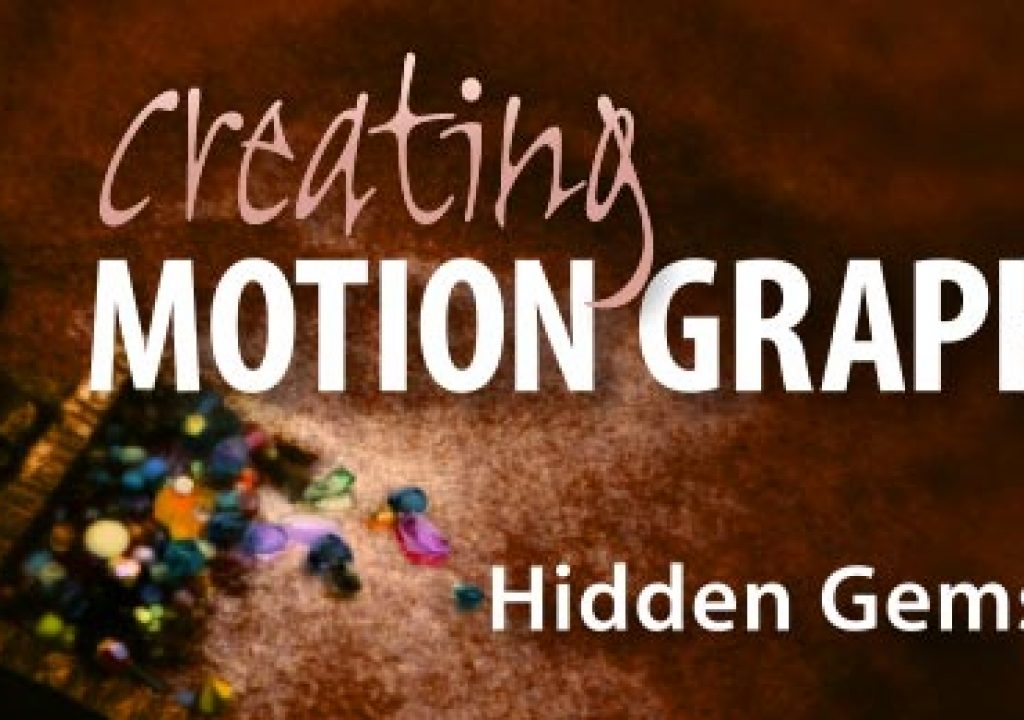
We are in the process of going through our book Creating Motion Graphics with After Effects 5th Edition (“CMG5”) and pulling out a few “hidden gems” from each chapter, including essential tips for new users as well as timesavers that experienced users may not be aware existed.
Chapter 5 of CMG5 covers tricks you can do with keyframes including tips for copying and pasting them; auto-orient rotation; and Keyframe Assistants (such as Motion Sketch, Smoother, Time-Reverse Keyframes, and Exponential Scale) to help you manipulate keyframes. Below is just a sampler:
To expand or contract a group of selected keyframes, in the layer bar view, hold down Option on Mac (Alt on Windows) first, then drag the first or last keyframe, as shown at right.
Moving and Nudging Motion Paths
To move multiple keyframes (or a motion path) in the Comp panel, first select the keyframes you want to edit, then do one of the following:
- Drag one of the selected keyframe icons in the Comp panel; the selected keyframes will move as a group.
- Park the current time indicator on one of the keyframes and scrub the value in the Switches column of the Timeline panel. All selected keyframes will move relative to the current keyframe. Be sure the time indicator is parked on one of the selected keyframes; if it isn’t, you will instead just add a new keyframe at that point in time.
- You can nudge a layer by using the up/down/left/right cursor keys to move a layer by one screen pixel at a time, or ten screen pixels with Shift pressed. To move a motion path, make sure you are parked on one of the selected keyframes.
Truncated Motion Paths
The Motion Path section of the Display Preferences controls how much of the motion path, or the number of keyframes, are visible at any point in time. The default is to show keyframes for 15 seconds around the current time indicator. However, if the motion path extends over a long duration, the motion path will be cut off – and you’ll have to move in time to see and edit the path. If there are a manageable number of keyframes, change the preference to All Keyframes (probably the most useful option) to avoid motion paths being truncated.
On another project, though, you might have hundreds of keyframes on a motion path that crosses over itself, which makes it difficult to distinguish and select individual keyframes easily. In this case, you might want to limit the number of keyframes, or the time period, to display keyframes only in an area immediately around the current time indicator.
Smoother KF Assistant
The Smoother keyframe assistant is designed to smooth out changes in a property’s values; it does this by replacing selected keyframes with a new set of keyframes, taking into account the Tolerance value. When it’s applied to a layer that was motion sketched (using Animation > Keyframe Assistant > Motion Sketch), it can leave behind a much more editable motion path; it can also be used to lend more of a “steadicam” after creating keyframes using a motion stabilizer. Smoother can be used on other keyframes as well, such as those generated by motion stabilization and tracking, or the Keyframe Assistant > Convert Audio to Keyframes.
The meaning of the Tolerance value changes depending on what type of keyframes you are editing – for example, when you’re editing Position keyframes, it will define the number of pixels new Position keyframes are allowed to vary from the original path. Larger Tolerance values result in fewer keyframes and therefore generally smoother animation; make sure you don’t overdo it, though – a little goes a long way.
Enter a Tolerance value, click Apply, and RAM Preview the results. If the animation requires further smoothing, Undo and try again with a different setting. Indeed, Undo is your friend here: Even though Smoother is now built into Motion Sketch, we set its value to 0 during sketching in order to capture the maximum amount of data, then smooth after the fact by experimenting to see what value gives us the most desirable result.
Above is keyframes from a motion-sketched spiral before smoothing; below is the motion path after smoothing.
Auto-Orient Rotation
Layer > Transform > Auto-Orient allows you to have your layer rotate to always aim along its motion path. A problem with Auto-Orient is that there’s usually a slight hitch at the beginning and end of the motion path (the layer appears to do a little extra twist). Let’s see how to fix that:
The problem is, the handle for the first keyframe may not align with the motion path (as is the case at right), so the layer orients itself at a slightly different angle for the first few frames. This results in a twisting motion for a few frames before the layer straightens itself out. The problem is even more obvious if you have motion blur enabled, as you will see additional blur during this sudden one-frame orientation.
The motion should be smooth as it exits your first keyframe. Repeat this for your last keyframe as well.
Trish and Chris Meyer share seventeen-plus years of real-world film and video production experience inside their now-classic book Creating Motion Graphics with After Effects. The 5th edition has been thoroughly revised to reflect the new features introduced in both After Effects CS4 and CS5. New chapters cover the revolutionary new Roto Brush feature, as well as mocha and mocha shape. The 3D section has been expanded to include working with 3D effects such as Digieffects FreeForm plus workflows including Adobe Repouss©, Vanishing Point Exchange, and 3D model import using Adobe Photoshop Extended. The print version is also accompanied by a DVD that contains project files and source materials for all the techniques demonstrated in the book, as well as over 160 pages of bonus chapters on subjects such as expressions, scripting, and effects.
We will be pulling a few “hidden gems” out of each chapter to share on ProVideoCoalition.com roughly every week.
The content contained in Creating Motion Graphics with After Effects – as well as the CMG Blogs and CMG Keyframes posts on ProVideoCoalition – are copyright Crish Design, except where otherwise attributed.

